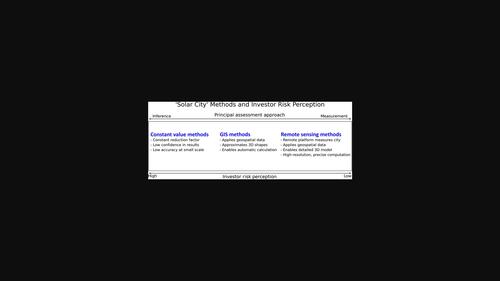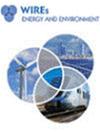基于推断和测量的方法估计韩国首尔特大城市屋顶“太阳能城市”的潜力
IF 5.4
3区 工程技术
Q2 ENERGY & FUELS
引用次数: 1
摘要
数据分析和收集技术现在允许对城市屋顶进行详细的清查,以确定地理定义边界内的太阳能潜力,包括城市的太阳能潜力。城市建筑存量的复杂性和固有的多样性推动了许多所谓的“太阳能城市”评估方法的引入,这些方法具有不同的准确性、可扩展性和易用性,旨在描述全市太阳能光伏(PV)资源潜力。对可用方法的综述支持两类方法之间的基本区别。首先,“太阳能城市”评估方法主要依靠推断来识别和表征屋顶太阳能潜力。这种推断方法可以在不需要直接了解屋顶条件或形态的情况下建立对全市太阳能潜力的估计。其次,基于测量的方法基于屋顶条件的直接测量来估计屋顶太阳能机会,通常通过遥感进行。使用案例分析对几种推理方法和基于测量的方法进行比较性能测试,强调了基于测量方法的重要性。特别是,基于测量的方法可能更适合支持有兴趣将城市或大都市地区转变为可持续城市的政策制定者和投资者的需求,这些城市或大都市的建筑可以作为新的太阳能光伏分布式电力服务系统的主机。本文章由计算机程序翻译,如有差异,请以英文原文为准。

Inferential‐ and measurement‐based methods to estimate rooftop “solar city” potential in megacity Seoul, South Korea
Data analysis and collection techniques now allow for detailed inventory‐building of urban rooftops for the purposes of identifying solar energy potential within geographically defined boundaries, including those of cities. The complexity and inherent diversity of a city's building stock has propelled the introduction of many so‐called “solar city” assessment methods that, with varying levels of accuracy, scalability, and ease of use, seek to characterize the citywide solar photovoltaic (PV) resource potential. A review of the landscape of available methods supports a fundamental distinction across two classes of methods. First, “solar city” assessment methods can principally rely on inference to identify and characterize rooftop solar potential. Such inferential methods can establish estimates of citywide solar potential without needing direct insight into rooftop conditions or morphology, Second, measurement‐based methods estimate rooftop solar opportunities based on the direct measurement of rooftop conditions, often conducted through remote sensing. Comparative performance testing of several inferential‐ and measurement‐based methods using case study analysis underscores the importance of measurement‐based methods. In particular, measurement‐based methods are likely better positioned to support the needs of policy‐makers and investors interested in transforming a city or metropolitan area into a sustainable city whose buildings serve as the host of a new solar PV‐powered distributed electricity service system.
求助全文
通过发布文献求助,成功后即可免费获取论文全文。
去求助
来源期刊

Wiley Interdisciplinary Reviews-Energy and Environment
ENERGY & FUELS-
CiteScore
11.70
自引率
3.30%
发文量
42
期刊介绍:
Wiley Interdisciplinary Reviews: Energy and Environmentis a new type of review journal covering all aspects of energy technology, security and environmental impact.
Energy is one of the most critical resources for the welfare and prosperity of society. It also causes adverse environmental and societal effects, notably climate change which is the severest global problem in the modern age. Finding satisfactory solutions to the challenges ahead will need a linking of energy technology innovations, security, energy poverty, and environmental and climate impacts. The broad scope of energy issues demands collaboration between different disciplines of science and technology, and strong interaction between engineering, physical and life scientists, economists, sociologists and policy-makers.
 求助内容:
求助内容: 应助结果提醒方式:
应助结果提醒方式:


